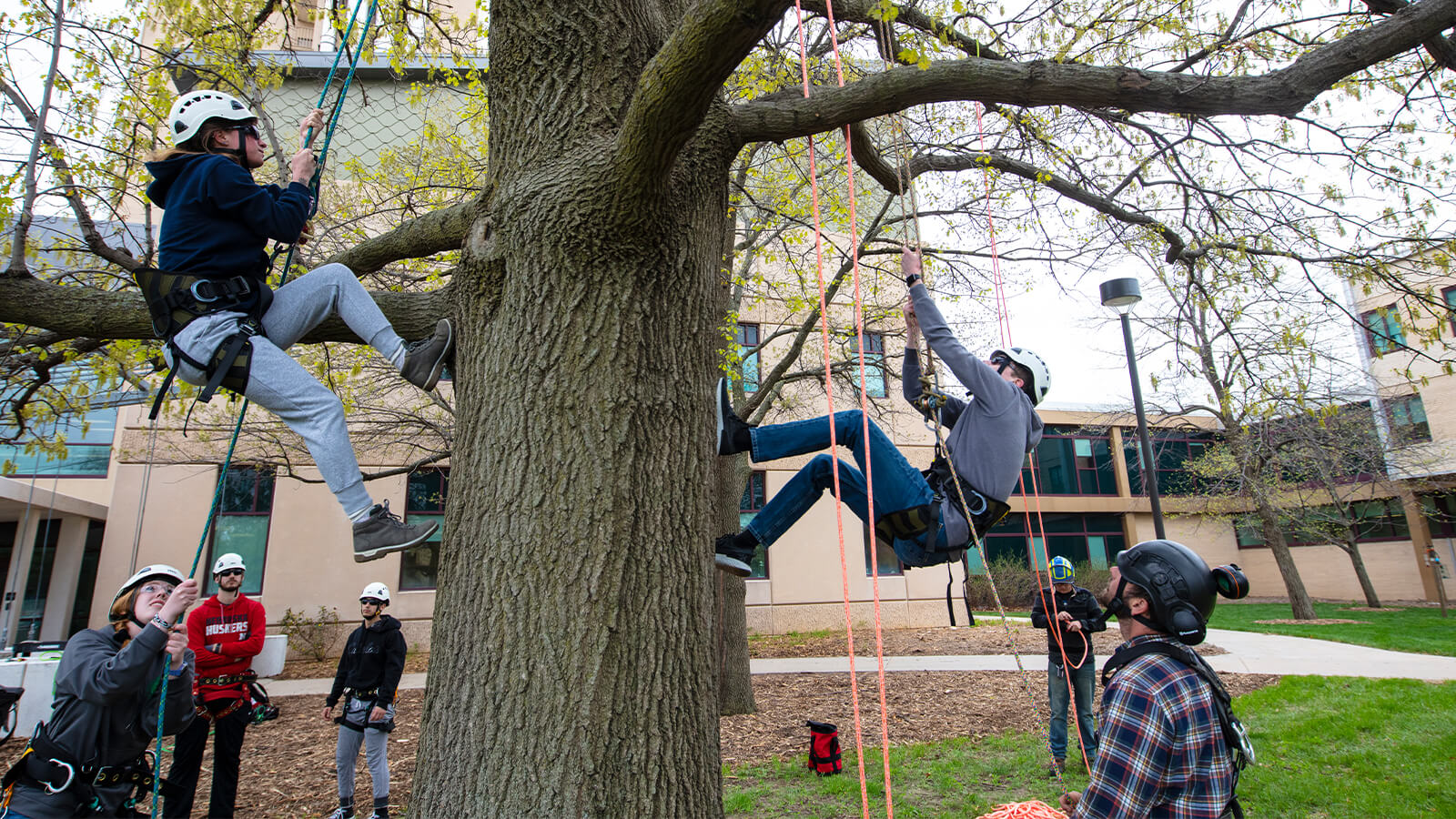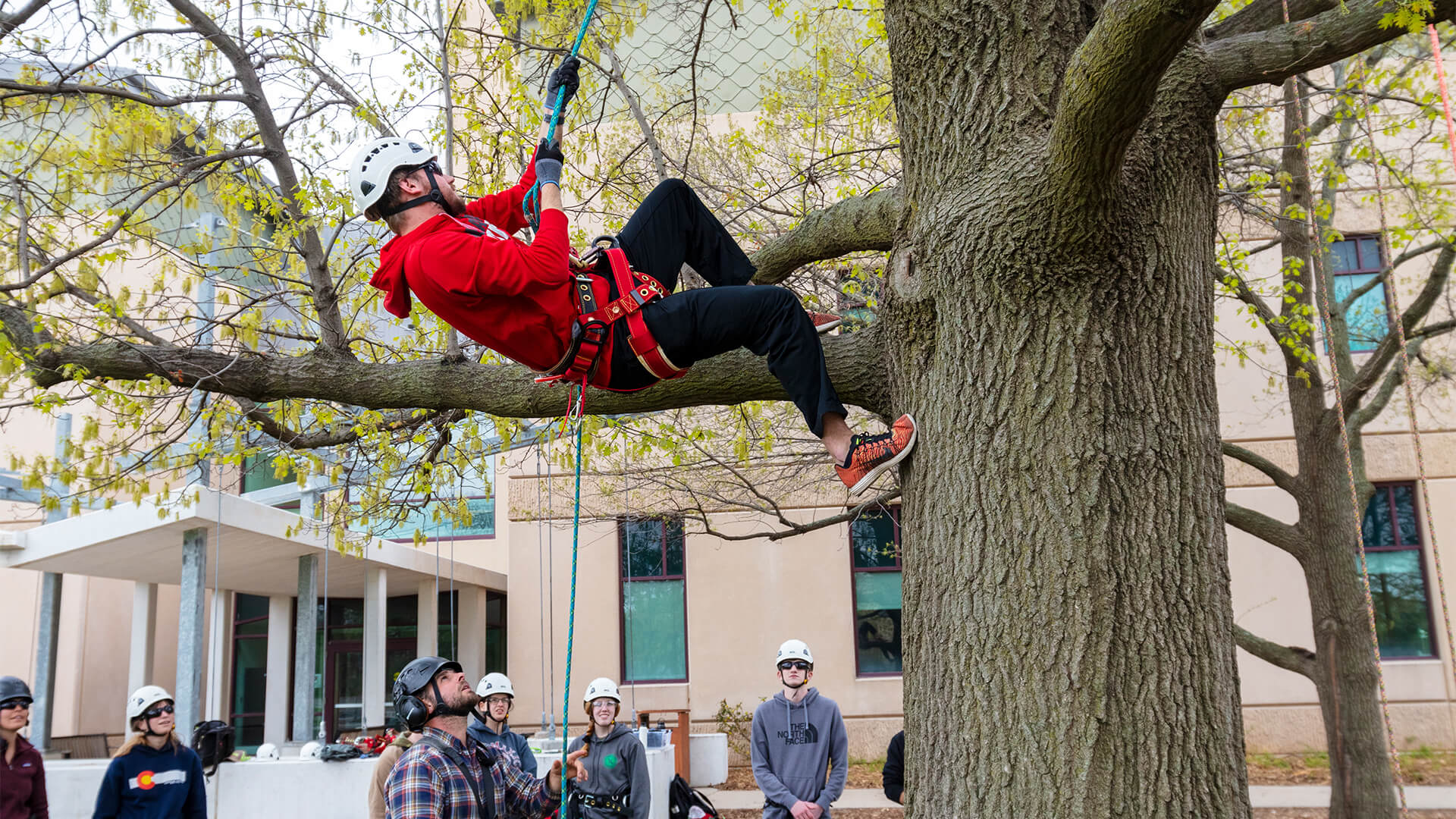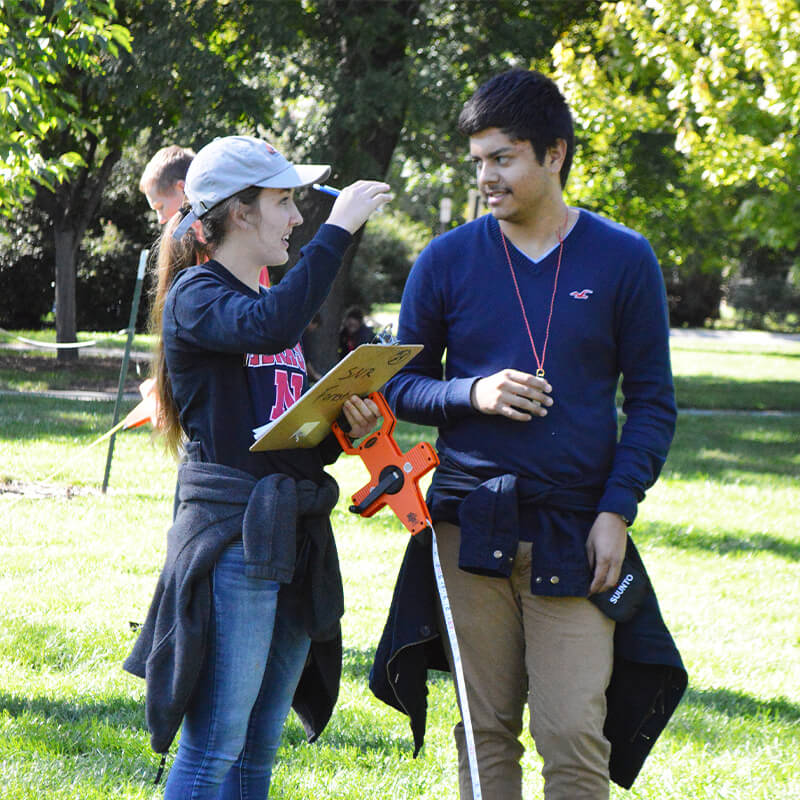Regional and Community Forestry

The Nebraska Difference
1-to-1 Individualized Advising
Undergraduate Research Opportunities
Hands-On Experiential Learning

Program Features
Build Career Skills
You'll gain resume-building experience climbing trees, measuring tree performance and learning proper chain saw techniques, all while building a strong background in tree biology and growing your strategic thinking so you can excel in managing urban forests.
Urban Forestry
Urban forestry management students learn to manage trees where we live, work and explore. Learn the complexities of community development using trees to improve the life of residents. Use technical skills to manage a diverse population of people and trees.
Arboriculture
Arboriculture students become experts in modern tree care for a diversity of landscape spaces. Learn how to care for trees and woody plant species, including pruning, site assessments and pest management in a changing environment. You will even learn how to climb a tree!

Notable Courses
Invasive Plant Species: Impacts on Ecosystems (NRES 107)
Learn how invasive plants establish and spread in ecosystems. Develop an understanding of their impact on ecosystems on a local and global scale.
Dendrology: Study and Identification of Trees and Shrubs (NRES 201)
An introduction to the naming, identification and natural history of woody trees and shrubs in North America with emphasis on trees common to Nebraska.
Woody Plants for Landscapes: Identification, Management and Use (NRES 212)
Identification, basic management and design uses of trees and shrubs for sustainable landscapes, with an emphasis on native plants and plants adapted to the Plains.
Cultivars and Varieties of Woody Plants for Landscapes (NRES 213)
Characteristics of commercially available trees and shrubs used in urban landscapes. Compare differences among cultivars, design uses and management issues.
Tree Biology (NRES 302)
The study of the structure and function of woody plants, with a focus on trees growing in temperate climates.
Green Space and Urban Forestry Management (NRES 457)
Focus on the management of trees, parks and green infrastructure in rural and urban communities. Perspectives from community planning, urban forestry, environmental policy and horticulture.
Huskers Do Big Things
Internships
- Davey tree arborist
- Naturalist teacher
- Community outreach coordinator
- Plant health care technician
Careers
- Forester, Nebraska Forest Service
- Nature interpreter, Arbor Day Foundation
- Arborist, Bartlett Tree Experts
- Extension agent, Pennsylvania State University
Graduate Schools
- M.S. and Ph.D. in Forest Ecosystems and Society, Oregon State University
- Forestry and Environmental Resources, North Carolina State University
- Master of Forest Management, University of Washington
- M.S. in Forestry, Michigan State University
Outside the Classroom
Study abroad in Australia to learn about agricultural enterprises, wildlife conservation efforts and food industries, from vineyards to fisheries.
Cedar Point Biological Station (CPBS) is a field research facility and experiential classroom in western Nebraska. Experiences draw on the variety of local habitats and diversity of flora and fauna.
Meet Lachel, a Husker alum who puts her degree to work as a program development manager for the Arbor Day Foundation.

Featured Faculty
Lord Ameyaw, Forester
Lord Ameyaw is an Assistant Professor and Forester in the School of Natural Resources. He earned his B.S. in Agricultural Technology from the University for Development Studies, Tamale, Ghana, his M.S. in Rural Sociology from Auburn University and his Ph.D. in Environmental and Forest Sciences from the University of Washington.
Have Questions? We're Here to Help
If you have questions about the Regional and Community Forestry major or navigating the application process, contact us.

- Contact Name
- Bridget Gross
- Contact Title
- Recruitment Specialist
- Phone
-
-